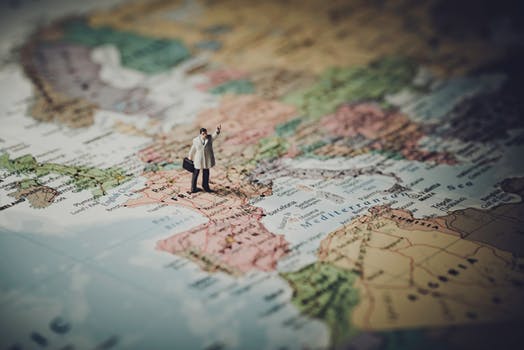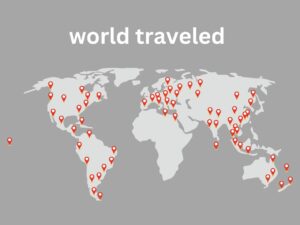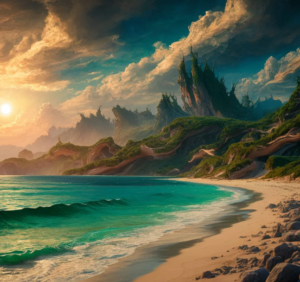How to Plan Your Next Trip in 5 Simple Steps.
We all have our difficulties when we start thinking about plan our next trip as a vacations or a dream trip.
We always have many gaps and few answers. But if we follow 5 simple steps, we can reach several decisions easier.
Step 1 – What type of traveler are you?
To know this, you need to answer some questions to plan your next trip.
- Do you enjoy planning and running your trip, or do you want someone else to do it for you?
- Are you luxurious or economical traveler
- Do you travel alone or with others?
- Do you have a fixed season to travel or are you free to choose
- Any particularities like children, animals, special needs, etc?
- Do you have a dream destination or are you just planning your next vacation?
With these answers you will get an idea of what style of travel you will be doing.
Step 2 – Where to go.
I believe that this is one of the most difficult steps when you are planing the nex trip, because the options are huge, but by answering the questions below you will be able to come up with a very small list.
- How much time do you have to travel? It’s no use planning a place that takes 30 days and you have only 2 weeks.
- What time of year (winter, summer). It is important to think about the time of year of the destination and not where you are.
It is necessary to know as you can face difficult like too many people and expensive.
Also dangerous situations like hurricane. In Florida between July and November is the hurricane season. - Be international – Observe restrictions and document requirements. See here where the Brazilians visa accuracy Portal Itamarati. Also consult the consulate of the country of destination.
Step 3 – What time of year to go.
Believes that the time is more related to the destination chosen, but it may be a factor in itself capable of changing your plan to next trip of going to one place or another.
The time of year has two distinct but interdependent aspects. We have the tourist season and the seasons of the year.
A – What we call high season tourism.
Travel to a destination during high tourist season
In favor
- The weather is better to your adventure. If you go to the beach, you will have more days with sunshine and if you go to skiing, you will get more snow and conditions.
- The location will be more prepared to receive the tourists, as the companies prepare to receive the tourists.
- You will have more availability of tours.
Against
- Usually has a higher cost.
- You need planning in advance, because everything will be more crowded.
- The attractions are always crowded, requiring a good dose of patience to wait your turn at the major attractions.
Travel to a destination outside the tourist season.
In favor
- The cost is usually much cheaper getting as low as 30 to 40%.
- The places are much more empty and quiet.
- You do not need to plan too far in advance because the attractions are empty
Against
- The weather may not be the best.
- Some attractions may not be available.
- The number of options decreases.
B – The seasons of the year has a big impact in your trip plan.
The seasons can have a big impact on your trip, as they influence the type of natural environment you will encounter.
Furthermore, it also determines what you can do during the trip.
Imagine someone from Rio de Janeiro going to Alaska in the winter, or vice versa.
Going in the summer can be great, but the heat can be a risk factor, especially sunburn or older people.
However, winter also has its risks, as, depending on the temperature, you can freeze.
The tourist season largely depends on what your travel destination has to offer.
For example, in the ski resort the season is in winter, while at beaches it is in summer.
Each station offers a unique experience. Planning your trip according to the season can make a big difference, ensuring you make the most of your chosen destination.
Therefore, choosing the season that best suits your travel style and expectations makes you enjoy every moment!
For me, the best cost-benefit choice is always to arrive a week or two after the tourist season ends, as prices are 30 to 40% lower, the weather remains good (whether cold in the ski resort or sunny on the beach) In addition to being everything more empty.
Generally speaking, here are some important points to consider:
1. Climate and Temperature
- Summer: Longer days and higher temperatures. Great for beach destinations and outdoor activities.
- Winter: Shorter days and lower temperatures. Ideal for snow sports and destinations with winter landscapes.
- Spring and Autumn: Mild temperatures and beautiful landscapes with flowers blooming or leaves falling. Excellent for hiking and nature walks.
2. Seasonal Attractions
- Events and Festivals: Many cities have season-specific events, such as summer festivals, autumn fairs, Christmas markets and spring celebrations.
- Specific Activities: Skiing in winter, swimming in summer, hiking in spring and fruit picking in autumn.
3. Crowds and Prices
- High Season (Summer and Winter Holidays): More tourists, higher prices and the need for advance reservations.
- Low Season (Spring and Fall): Fewer tourists, lower prices and a quieter experience.
4. Luggage and Clothing
- Summer: Light clothing, sunscreen and bathing suits.
- Winter: Heavy coats, gloves, hats and boots.
Spring and Autumn: Clothing in layers, as the weather can vary greatly throughout the day.
5. Natural Landscapes
- Spring: Flowers blooming, colorful gardens and cool weather.
- Summer: Blue skies, crowded beaches and lots of greenery.
- Autumn: Leaves changing color, golden landscapes and pleasant weather.
- Winter: Snow, white landscapes and a special charm in cities.
Step 4 – Prepare the itinerary.
Now that you know your style of travel. Where do you want to go and what is the time of year, now it is time to write a itinerary.
The itinerary is important to decide the hotel, where you will be every day, food, passage and all the transport and tours that will perform.
Step 5 – Estimate expense on food, transportation and tours.
Step 5 is a consequence of the first 4, because now you need to search and find out the costs based on the previous steps.
Transport.
Depending on where your destination is and what category of transportation you will use. Tools like skyscanner and decolar.com. Can help.
If you do not know how to get there, you can use the site www.rome2rio.com that will show you what transport options exist to reach your destination. Site has in Portuguese from Portugal.
Food.
This varies a lot as it depends on what your style is, but using the site like www.expatistan.com or www.numbeo.com, you get a good idea of the local cost. These sites are in English, but it is very easy to use.
Tours.
Maybe you already have an idea of what you want to do, so just use sites like Aviator or TripAdvasor to know the values of each tour.
But I would recommend not to close the tours before arriving at the destination, as you usually get something better on the spot and there might be some unforeseen situation like rains etc.
I only recommend booking early, for those attractions that have limits and you do not have time available, that is, there is only one specific day to go.
With these 5 steps you will be able to plan your next trip.
I will be creating several post how best to use each tool and travel tips.
Stay tune
If you want a indeep steps please check Travel – Everything you need to know to travel more and better.





